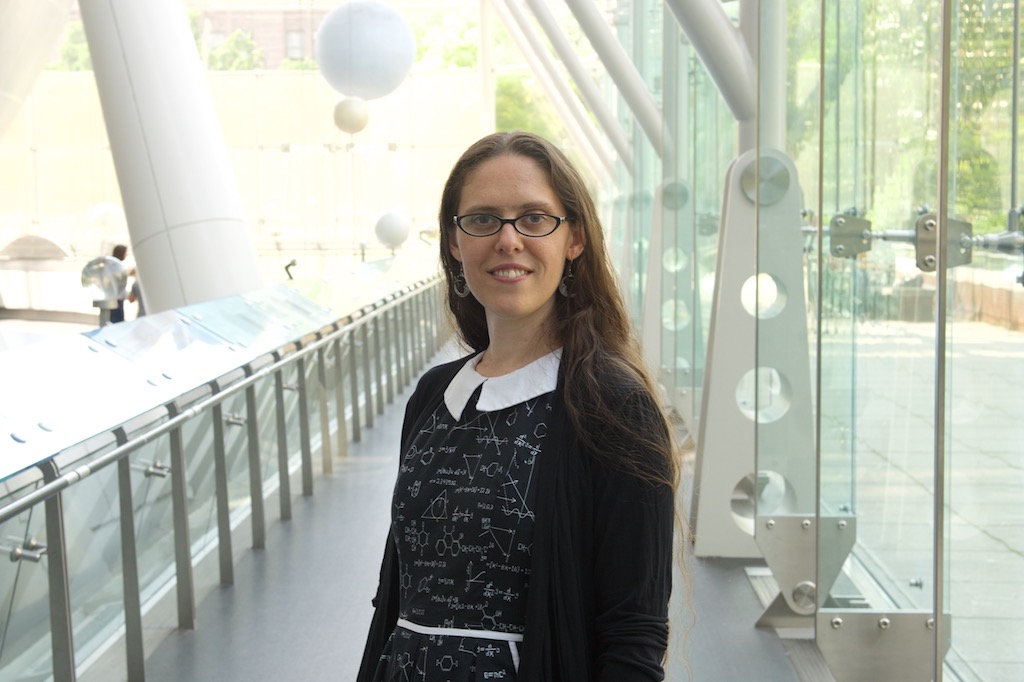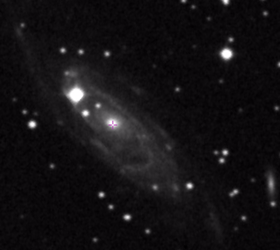
The Hubble Space Telescope has been orbiting the earth since 1990. About the size of a school bus, it takes photographs of planets, stars and galaxies trillions of miles away.
Given what those images can tell us about the universe, it’s no wonder scientists around the world are vying for the chance to point the Hubble Telescope toward the part of deep space that relates to their own research—and now, through a grant from the Space Telescope Science Institute (STScI), Borough of Manhattan Community College (BMCC/CUNY) Professor of Science and astrophysicist K.E. Saavik Ford has won the right to do just that.

Ford will use Hubble (shown right) to observe UGC 2885, the largest-known spiral galaxy. She will collaborate with a team of astronomers, astrophysicists and researchers including Jeremy Bailin of the University of Alabama; Pauline Barmby of the University of Western Toronto; Rupali Chandar of the University of Toledo; Benne Holwerda of the University of Louisville, and Molly S. Peebles of the Space Telescope Science Institute.
“The Hubble Space Telescope is the most over-subscribed telescope in the world,” says Ford. “It’s really just a big light bucket, a big mirror open to the sky. You point it at what you want to observe and you put a powerful camera behind it and catch great pictures. If the telescope is the size of a school bus, the mirror is like the back end of the school bus. It orbits around the earth about every 90 minutes. The STScI awards are divided into orbits, and we got 12 orbits.”
Getting first crack at new data on a uniquely large galaxy
All data generated by the Hubble Space Telescope becomes publicly available eventually, Ford says, “but if you win a grant and specifically ask the Hubble to look at something, you get first crack at the data and there is a proprietary period.”

The team’s interest in UGC 2885 (shown right) centers on a number of factors, including its size. “If earth’s galaxy, the Milky Way, is the size of a quarter, UGC 2885 is about the size of a Frisbee,” Ford says. “The second-biggest spiral galaxy would be smaller than the size of the lid on your wonton soup container.”
UGC 2885 was discovered by the American astronomer Vera Rubin, whose data provided some of the earliest evidence for the existence of dark matter, and who mentored aspiring women astronomers, including Saavik Ford.
“She was one of the first people to discover that if you track how fast the stars are orbiting in spiral galaxies, it becomes clear that they are orbiting too fast for the galaxy to be able to hold itself together—so you have to assume there is something distributed throughout the galaxy that we now call ‘dark matter’, that holds it together,” says Ford. “She demonstrated how big UGC 2885 is, that it is rotating and that it has dark matter.”
What distant galaxies can tell us about our own
Through the STScI-funded project, each member of Ford’s team will look at different aspects of data gathered by the Hubble Space Telescope, during its orbits trained on specific sections of UGC 2885.
“The big question is, ‘Where did this enormous galaxy come from and why is it a spiral galaxy, and not an elliptical galaxy?’,” says Ford. “We think UGC 2885 probably formed from a lot of gas rather than from the collisions of many smaller galaxies, but we want to see if there is more evidence for that theory.”
By positioning the Hubble Space Telescope on globular clusters, or collections of stars that orbit the center of UGC 2885, “That could point us toward being able to make a theory about how it was formed and whether it is active,” Ford says.
The team then plans to map the star clusters throughout UGC 2885, and try to determine if that cluster map is more consistent with galaxies that are spirals—but much smaller than UGC 2885—or more consistent with galaxies that also very large, but are elliptical.
In other words, Ford says, “Different cluster maps tell us about different formation histories.”
The Milky Way, like UGC 2885, is a spiral galaxy, “so the data we collect could also shed light on the formation and evolutionary direction of our own galaxy,” Ford says.
An exciting opportunity for BMCC students
Professor Ford—who is also a research associate in the Department of Astrophysics at the American Museum of Natural History, a member of the doctoral faculty at the CUNY Graduate Center and an invited member of the James Webb Space Telescope, Near-Infrared Imager and Slitless Spectograph-Aperture Masking Interferometry (JWST NIRISS-AMI) Working Group—has devoted her research career to analyzing Active Galactic Nuclei (AGN), or black holes expanding in the center of a galaxy.
While the STScI grant award totals just $5,619, “What we can learn, and the potential value of data gleaned from the Hubble photographs is incalculable,” she says.
The data will probably be available to the team in Fall 2018, and by Spring 2019, Ford might begin the process of involving BMCC students as she parses through it.
“I’ve worked with many BMCC students looking at archival data from ground-based and space-based telescopes,” she says. “But this is an exciting opportunity to be the very first people to look at data ‘hot off the presses’.”
STORY HIGHLIGHTS
- Hubble Space Telescope orbits earth and photographs planets, stars and galaxies trillions of miles away
- Through Space Telescope Science Institute grant, BMCC Professor K.E. Saavik Ford and team get first crack at data from Hubble photos of galaxy they are investigating
- Data could also provide insight into the origin of the earth’s own galaxy, the Milky Way

